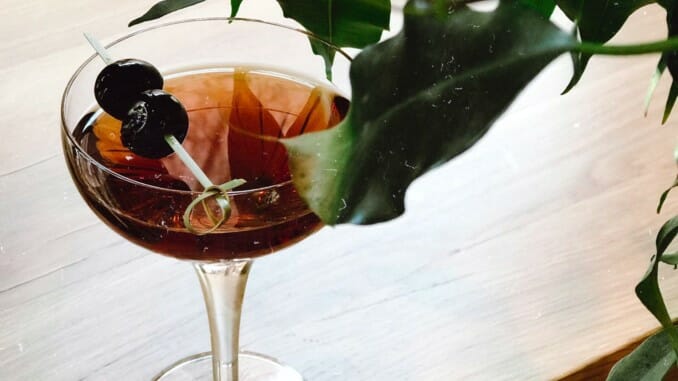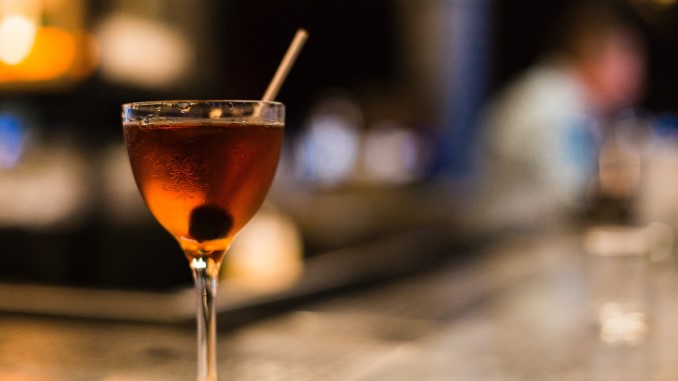What Is the Best Manhattan Cocktail Ratio? A Paste Taste Test
Photos via Unsplash, Drew Beamer, Emily Andreeva Drink Features cocktails
Cocktail Queries is a Paste series that examines and answers basic, common questions that drinkers may have about mixed drinks, cocktails and spirits. Check out every entry in the series to date.
The Manhattan cocktail is, perhaps unsurprisingly, one I’ve waxed poetic on more than once in the past. An unassailable classic, there are few simple pleasures more perfect than a well-made Manhattan before dinner, although we’d argue it’s also one of the cocktail recipes that is most easily ruined by making it poorly. Whether that’s a function of using a whiskey that is too weak or bland, overly diluting the drink, using low-quality vermouth, or neglecting to add the right bitters, there are a lot of bad Manhattans out there, and it’s always a shame to see.
With that said, one aspect of preparing this drink that is very important, but sometimes glossed over, is how one approaches the all-important Manhattan ratio. Which is to say: When you mix a Manhattan at home, what ratio of whiskey-to-vermouth are you using? Because this can be a very, very different drink with relatively small changes to that ratio, and it ultimately plays a huge role in determining what kind of flavor profile your Manhattan will have.
This is important to consider, because there really isn’t any true consensus on what the “proper” ratio is supposed to be. The original incarnation of the drink, created as early as the 1860s or 1870s, was quite rich and vermouth-forward, typically employing a 2:1 ratio of two parts whiskey (classically rye whiskey) to one part sweet vermouth. This yields a very full-bodied, silky, decadent cocktail. Over time, that ratio frequently drifted in a slightly more dry direction, and a 3:1 ratio became quite common in restaurants and bars.
However, as “extra dry” versions of cocktails such as the martini (unfortunately) came into vogue, especially in the 2000s, the Manhattan seemed to get caught up in the same wave. It became trendy to act as if the vermouth in a martini or Manhattan was simply a detriment getting in the way of enjoying your vodka, bourbon or rye, and people making martinis in particular would go out of their way to sneer at the inclusion of any vermouth at all. It seemed like there was a certain element of machismo here, as if making the Manhattan a drink that was almost exclusively whiskey was technically more flavorful/intense and therefore more “manly.” In response, the ratios used at bars and restaurants frequently seemed to creep up to 4:1 and beyond in the 2000s. In the years that followed, if you looked for a Manhattan recipe online, you might find any of the above and think this is the ONLY way to make the drink.
Today, however, there seems to have been some regression back to the classic Manhattan, and a newfound appreciation for vermouth among bartenders and the cocktail cognoscenti. And it made me wonder: Why do I make a Manhattan the way I do at home? Do I even know which ratio I actually prefer? Why not test it out in an objective way?
And so, I present this taste test, setting equal samples of the 4:1, 3:1 and 2:1 ratios against each other to see which one I legitimately think is best. Without further ado, let’s get right to it, in the name of science.
Manhattan Ground Rules

Obviously, I made all of these test Manhattans with the same whiskey, vermouth and bitters for consistency. For the whiskey, I used some 100 proof rye (100 or higher is best) in the form of WhistlePig 10 Year. For the vermouth, I used my go-to for Manhattans, which is Carpano Antica Formula. The bitters are simply a dash of good old Angostura—nothing fancy.
Each Manhattan was stirred—the Manhattan should always be a stirred drink, as we’ve written about before—with the same amount of ice, for the same amount of time. They were then poured into the same style of glass. I didn’t bother with the cherry garnish, as I just wanted to get a feel for how different each iteration of the drink would be with a 4:1, 3:1 or 2:1 ratio.
Suffice to say, the results confirmed what I already would have expected: All three versions of the Manhattan are charming in their own way, but they’re substantially different drinks in terms of flavor. Here’s what I thought of each.
4:1 Ratio Manhattan
The strongest and most spirit-forward of the three definitely puts the rye whiskey front and center. This is a very spicy Manhattan, and it’s also a little bit hot, whereas the booze in the other two is considerably more subdued and gentle. I get more of the cocoa and herbal/spicy notes of the rye here, although there are some supporting flourishes of vanilla and a little bit of red fruit from the Carpano Antica.
All in all, this isn’t bad—it’s actually somewhat better than I thought it would be. It does make for a Manhattan that is a bit harder to drink, though—less a “cocktail” and more a modified whiskey, if you will. I feel as if the drink probably shouldn’t have as much alcohol burn as this version does, under the best circumstances. One additional thing I’ll say is that if you’re going to make a Manhattan with a 4:1 ratio, you’d better pick a rye or bourbon that you’d really, really enjoy drinking neat. When the whiskey makes up this high a proportion of the drink, it demands to be something of great quality, because it’s the majority of what you’re going to taste.
3:1 Ratio Manhattan
The 3:1 ratio presents a pretty dramatic change from the 4:1 ratio, and there’s ultimately a bigger jump in terms of flavor from one to the other here than there is between the 3:1 and 2:1 ratios. The first thing one notices here is actually textural, as this Manhattan has more of a silky and smooth texture than the 4:1, and it’s also correspondingly sweeter and more rich. The spice of the rye has been almost entirely preserved, but it’s no longer the sole, star attraction. More red fruit and vanilla has been added, with a juicy berry note that rounds out the whole thing.
I think it’s safe to say, at the end of the day, that this is a much more balanced drink than the 4:1 ratio Manhattan. The textural change is a good one, and that alone makes this feel more “classic cocktail” than the previous Manhattan. The sweetness and fruit flavors pair well with the rye, making for an all-around well-balanced drink. The alcohol heat, likewise, has been tempered a bit more, leading to something that is easier to drink. It’s a very good, classic Manhattan flavor profile.
2:1 Ratio Manhattan
Going from the 3:1 ratio to this one isn’t quite as dramatic a departure as going from 4:1 to 3:1—instead, it’s more of a subtle continuation of the themes that were already emerging in the 3:1 Manhattan. This one becomes very rich, and very silky in texture. Lots and lots of fruit flavors are emerging now, including more dried fruit/raisin and vanilla bean, with subtle pepper and some cocoa. It’s taken on more of a vinous quality as the wine really makes its character felt. The whiskey, on the other hand, has begun to recede a bit. Notably, this one hides the alcohol very well—it’s remarkable how much more gentle it is than the 4:1 ratio. The end result is almost a little bit decadent.
Which of the three is actually my favorite, though? I find myself feeling a little bit torn. The 3:1 certainly seems to display the best balance of the group, though I can understand why mixologists and craft cocktail enthusiasts now seem to increasingly be throwing their weight behind the old-school 2:1. Ultimately, though, I feel like the 2:1 may be taking the vermouth a little bit further than it needs to go. If I could only choose to drink one of these ratios from now on, I think I would choose the 3:1, but the real perfect ratio may be somewhere in-between, such as 2.5:1. That’s beginning to split hairs, but in that range you’re doing an excellent job of balancing fruit, spice and richness.
And wouldn’t you know it—the International Bartenders Association (IBA) version of the drink has this exact ratio: 2.5 parts of rye whiskey, to 1 part sweet vermouth, with a single dash of Angostura bitters. Have we finally, and for good, determined the best possible Manhattan ratio? I think the proof may be in the drink, so go ahead and mix one for yourself today.
Jim Vorel is a Paste staff writer and resident liquor geek. You can follow him on Twitter for more drink writing.